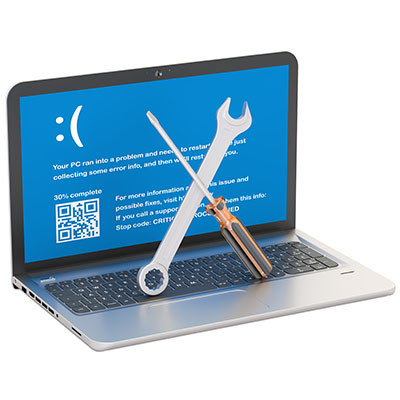GTIN Managed IT Blog
For small businesses, having a fast, reliable Internet connection is needed to run all the digital tools that your staff has come to depend on. If you don’t have the bandwidth in place, you can deal with bottlenecks that can ruin communications, stall productivity, and cause operational issues of all types. Today, we’ll take a look at how to determine the amount of bandwidth you need to support your business’ computing infrastructure.
The metaverse is a buzzword that many companies have been throwing around in recent years, but what is it, exactly? You might want to sit down for this one, as it is going to get a little complicated and, perhaps, even a bit confusing. We’ll do our best to unpack what the metaverse is, why there is such an emphasis on it these days, and what you might expect to see from a metaverse in the future.
Software makes business run: that is an undeniable statement. From the operations software that allows your business to manage and pay its people to the CRM that provides a pathway to communicate efficiently with customers, to all of the applications that it takes to conduct business in earnest, software plays a crucial role in your business’ success.
The landscape of telephony for small businesses has changed dramatically. It’s likely that you don’t rely on your phone nearly as much as you rely on other technologies, like your Internet, communications solutions, and email. Still, an antiquated phone system can hold you back, so let’s explore the other viable option for your business: Voice over IP.
We often discuss data backup and disaster recovery on our blog, and you may even be familiar with some of the terms and practices we throw around. Today, we want to take a closer look at the 3-2-1 rule and how it impacts your business’ ability to recover in the face of a disaster. Let’s dive in and see how the 3-2-1 rule can make or break your company’s data infrastructure.
Every business depends on some type of software, but some businesses seem to have an application for every single thing and it can be too much for employees or administrators to manage. So the question has to be asked: What is the right amount of software for your business? Today, we’ll discuss the types of software every business needs and how to determine what you need.
Unfortunately, technology is just a tool. It can do so much for your business, but there are times when your technology is getting older and it stymies the amount that you can produce. This degradation can have a stark effect on your organizational productivity from downtime, cost, and more. Let’s look at how you can identify variables that tell when your technology has to be replaced.
Artificial intelligence is a hot-button issue in today’s business technology landscape, and for good reason. It’s being implemented in various software tools and platforms with mixed results. There are some concerns over it, particularly in regard to intellectual property, but there are also major issues with it related to “the profound risks to society and humanity,” according to an open letter.
Artificial intelligence, or AI, is just one way of describing the concept of machine learning technologies. AI has grown considerably over the past couple of years, so much that automation as we know it today wouldn’t exist without it. Throw in some data-driven insights and you have a technology that has cemented itself for use in a business environment, but there are some concerns with how fast it is growing and evolving.
Voice over Internet Protocol, also known as VoIP, has revolutionized the way businesses manage their communications through the use of telephony. Employees who were once tethered to their landlines or their physical locations can now break free of these constraints, and it’s all thanks to VoIP and cloud-based communication tools. Here are some of the best features of VoIP solutions for small businesses.
The way you invest your business’ IT budget will have a considerable impact on how it performs. If your technology dollars are well spent you should see improvement year-over-year. Technology improves time management and allows for more automation than ever, not to mention the cost savings you see as a result. Let’s briefly discuss the IT budgeting process and how to build budgeting priorities that work.
Ultimately, your employees are going to be the ones using your technology to accomplish their daily duties, so it helps to treat them like customers rather than end users. If you examine industry trends to make the best decisions possible with your technology and communications solutions, then you’ll allow your team to flourish in the process.
Computers are great tools to get work done in the office, but only if they are used effectively. Employees looking to get more out of their Windows workstations can utilize the taskbar to get around faster. We’ll discuss some of the ways your business can take better advantage of the taskbar, as well as what it’s capable of.
When you think of downtime, you probably think about the power or your Internet connection going out and leaving you unable to do work. Unfortunately, these are anecdotes that seem benign, but are actually extraordinarily costly. When interruptions to your business’ computing infrastructure are constantly hindering productivity, you need to come up with a solution.
For modern organizations that depend highly on their technology, nothing is quite so scary as an event that can completely marginalize its ability to operate. This doesn’t need to be a fire, flood, or some other major cataclysm; it could be something as simple as some of your old IT fails and you’re not ready for it. This week, we thought we’d briefly go through what a catastrophic failure looks like and some steps you can take to keep your business from experiencing one.




















